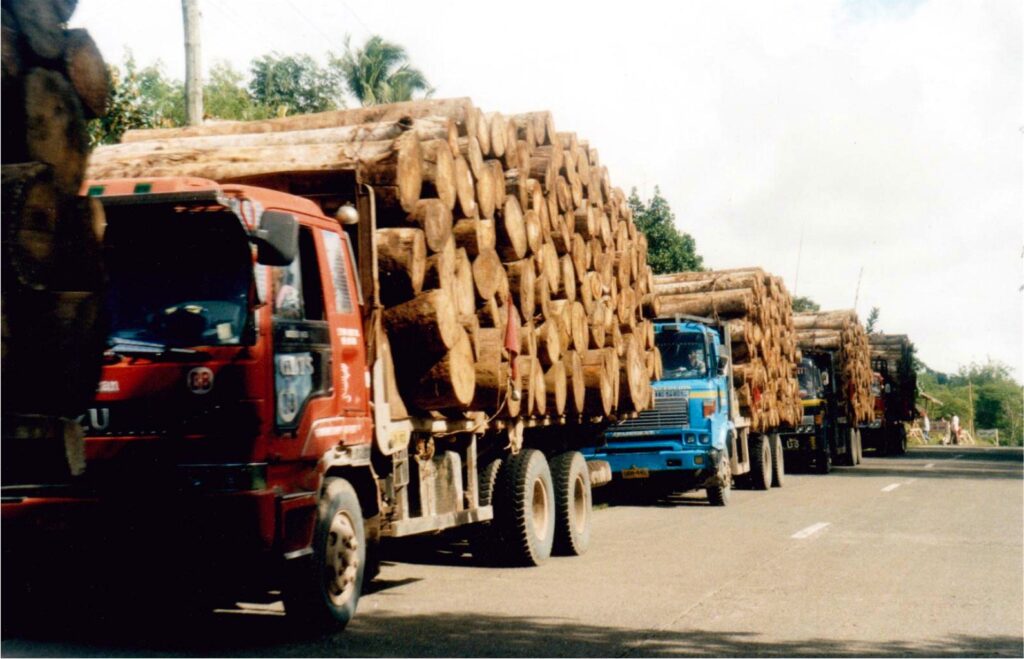Text and Photos by Henrylito D. Tacio
“IN the 1970s, eminent people were saying it was the end of the infectious disease era. We now find after the experience of the 1980s and 1990s, we are sadder and wiser,” said Professor Tony McMichael, of the Australian National University in Canberra.
Rates of infectious disease, indeed, have risen rapidly in many countries in recent years. Illness and death from tuberculosis, malaria, dengue fever, and Acquired Immune Deficiency Syndrome (AIDS) are up sharply.
“The resurgence of diseases once thought to have been conquered stems from a deadly mix of exploding populations, rampant poverty, inadequate health care, misuse of antibiotics, and severe environmental degradation,” says a report from the Washington-based Worldwatch Institute, Infecting Ourselves: How Environmental and Social Disruptions Trigger Disease.
“Infectious diseases are a basic barometer of the environmental sustainability of human activity,” writes the report’s author, Anne Platt. “Recent outbreaks result from a sharp imbalance between a human population growing by 88 million each year and a natural resource base that is under increasing stress.”
Evidence is mounting that deforestation and ecosystem changes have something to do with this phenomenon, according to the report compiled by the Working Group on Land Use Change and Disease Emergence, an international group of infectious disease and environmental health experts.
“Many of our current activities, primarily for economic development, have some major adverse health effects,” points out Dr. Jonathan A. Patz, the lead author of the report, and a University of Wisconsin-Madison professor in the Center for Sustainability and the Global Environment (SAGE) of the Nelson Institute for Environmental Studies and the department of population health sciences.
As people remake the world’s landscapes, cutting forests, draining wetlands, building roads and dams, and pushing the margins of cities ever outward, infectious diseases are gaining new toeholds, cropping up in new places and new hosts, and posing an ever-increasing risk to human and animal health. “The dramatic resurgence of infectious diseases is telling us that we are approaching disease and medicine, as well as economic development, in the wrong way,” Worldwatch’s Platt notes.
“One of the clearest examples of how ecosystem disruption affects disease behavior can be seen in the interaction between deforestation and the infectious, and particularly vector-borne, diseases that are common through tropics and subtropics,” writes Francesca Grifo, director of the Center for Biodiversity and Conservation at the American Museum of Natural History. (A vector is an organism that transmits a disease from place to place.)


In the 1940’s, Trinidad suffered a malaria epidemic in response to deforestation for massive cacao plantations. The plantations proved ideal for many species of bromeliad plants, 20 of which turned out to be perfect breeding sites for the local malaria-carrying mosquito ‘Anopheles bellator.’
Lyme disease, which is spread by ticks, was first identified in 1976 in the northeastern part of the United States. “Forest fragmentation, loss of predators, and the shift of suburbia closer to woodlands were all implicated in the appearance of this disease,” said Prof. McMichael.
Another example was the Nipah virus. In 1999, this virus killed 100 people in Malaysia and nine in Singapore. The virus was normally carried by the forest fruit bat and had not previously seemed to pass to humans. However, because of deforestation and agricultural techniques the bat’s normal habitat and food source were changed. This forced the bats to encroach into fruit plantations, which were in close proximity to pig farms. The bats infected the pigs, which in turn infected the farmers.
“I think this has shown that deforestation has a very great impact on the emergence of disease,” commented Dr. Victor Lim, a Malaysian professor of microbiology at University Hospital.
In Malaysia “and in other countries with lush tropical jungle and immense biodiversity,” continued Dr. Lim, “I am sure there are lots and lots of pathogens lurking in the jungle; they have been there for many years and they are quite happy to be there among the animals. I think things go wrong when we start to encroach into the jungle and start cutting down trees.”
Yellow fever, an acute infectious tropical and subtropical disease, was originally transmitted in a jungle cycle from monkey to monkey via the mosquito ‘Aedes africanus.’ When logging started, people entered this cycle. Bitten in the forest, loggers would return to their homes in cities, where the disease would be spread in a person-to-person cycle via alternate Aedes species that thrive in disturbed urban environments.
A more global example is the AIDS virus – human immunodeficiency virus (HIV) – which some scientists think may have first infected “bush meat” hunters given access to Africa’s tropical forests by the growing network of logging roads in the continent’s interior. The disease subsequently spread by human contact and has become a global tragedy through the ability of humans to travel the world with relative ease.
Where have all our forests gone? A few years back, I accompanied an American friend who visited a Bible school somewhere in the outskirts of Davao City. It was too late when we arrived at the place. Since there was no more electricity by 9 pm, I decided to sleep immediately.
When I woke up the following day, I didn’t see my companion in his bed. I was wondering where he went. But since it was too early to wake up, I decided to go back to sleep. It was around 6 in the morning when I heard my friend calling my name.
“What’s up?” I asked. “I just came from that mountain up there. I went jogging. I saw this sign (showing something written on his palm). Can you read what this means?” he begged. Well, it was written in our vernacular so he didn’t understand what it meant. It said: “Guinadili ang pagpamutol sa mga kahoy!”
When I told him what those words were, he smirked. “You must be kidding me,” he said. “There are no more trees out there!”
Some records showed that 54 years after Portuguese navigator Ferdinand Magellan “rediscovered” the Philippines, ninety-two percent (27.5 million hectares) of the country’s total land area of 30 million hectares was covered with forests. This went down to 70 percent (20.9 million hectares) in 1863, then to 64 percent (18.9 million hectares) in 1920, and 36.3 percent (10.9 million hectares) in 1970.
Despite laws banning cutting of trees, deforestation still continues. “Our forests are being denuded at the rate of 25 hectares per hour,” deplored Rep. Mark Villar of the Lone District of Las City.
Logging – either legal or illegal – has been cited as the primary culprit of the rapid disappearance of the country’s forest cover. Aside from logging, however, other causes of deforestation in the Philippines are forest fires, slash-and-burn farming (locally known as kaingin), mining operations, geothermal explorations, dam construction and operation; and land development projects such as construction of subdivision, industrial estates, and commercial sites.

Volcanic eruptions have also devastated some of the country’s forests. Ditto for typhoons, which have devastated considerable hectares of forest cover.
The country’s surging population – currently totaled 100 million – has also contributed to the problem. At least a fourth of the total population live in the upland areas, where most trees are located.
Dr. Ernesto Guiang, who was once with the Development Alternatives, Inc., echoes the same concern: “We are now at the eleventh hour. We have to pay attention to the handwriting on the wall with respect to our forests.”

